An old-timey skill for a modern need
by Nancy Nickolson, Family Programs Coordinator, and Julia Petrov, Acting Head of History
June 15, 2020
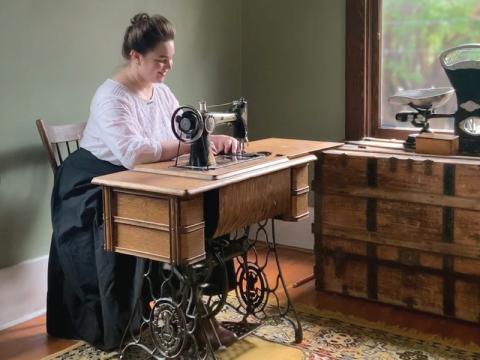
There’s no doubt that sewing is necessary for survival. Connecting materials together for hunting, shelter, or clothing enables us to eat, sleep, and move comfortably in the most inhospitable climates. Our early ancestors, the Neanderthals, made string or threads 50,000 years ago in France. Another pre-human group called the Denisovians made the oldest sewing needle out of bird bone also about 50,000 years ago; it was found in 2016 in a Siberian cave! Humans also had these technologies, and different cultures have created beautiful clothing and tents with these simple tools.
The technology of sewing to connect animal hides or woven textiles together with a needle and thread continued virtually unchanged until the 1840s, when the sewing machine was invented. Unlike hand sewing, where only one thread goes in and out through the layers of fabric, the sewing machine has a bobbin underneath the needle, which loops a second thread around the first, sandwiching the fabrics in between. The earliest machines could only do straight stitches, but they made the tedious work of sewing long seams faster, and helped make clothing and household textiles cheaper and more accessible for more people.
Early European settlers to Alberta brought sewing machines with them. A foot-powered or hand-cranked sewing machine was essential for a household before electricity, and these early models are still commonly found in homes and antique stores today, even if they are no longer fully functional. Sewing your own clothes continued to be common into the 1970s, before fast fashion made it redundant, although many people still enjoy sewing as a hobby. RAM has 78 sewing machines in its collection, including industrial, home, and miniature models.
The shortages of industrially-produced disposable masks have made sewing essential again, and thousands of hobbyists around the province have mobilized to create masks, headbands, and scrub caps for loved ones and essential workers. Why not dust off your own sewing machine and make a face mask?
In the Collection
Children like Maxine McLeod Harrison learned to sew on miniature machines. This one was bought at the Singer store on Jasper Avenue in Edmonton in 1935. She made clothes for her dolls, just like her mother made clothes for Maxine on her full-size Singer sewing machine.
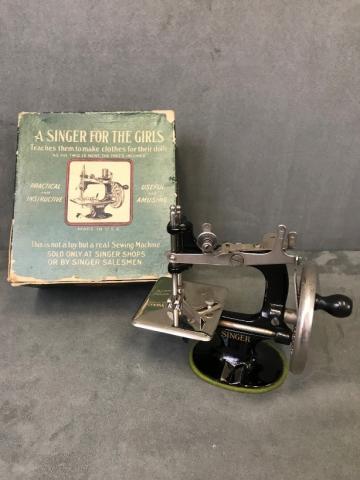
This Singer sewing machine is from the late 1920s or early 1930s. It belonged to Lossie Lane, an early Black settler from the US to Maidstone, Saskatchewan. In 1953, Lossie moved to Edmonton to live with her daughter Rose, and brought this machine with her. Lossie was an avid quilter and her granddaughters remember her sitting at the sewing machine, pumping the treadle to the rhythm of the gospel music she liked to listen to on the radio. Lossie taught her granddaughters Rose Mary and Christine how to sew on this machine, and they now also enjoy making quilts in their spare time.
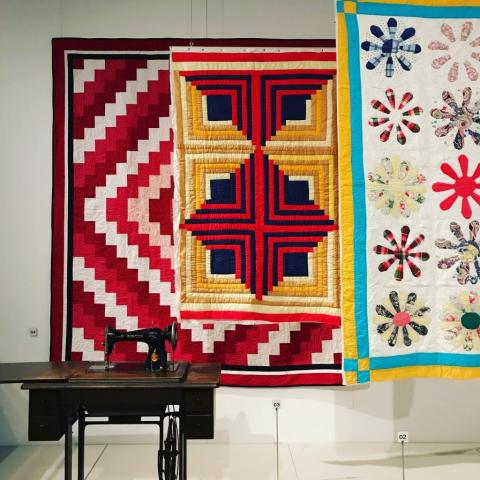
In the military, a sewing kit was nicknamed a “housewife”, even though they were usually used by men. These kits contained essentials like thread, needles, and spare buttons, to help soldiers make quick repairs to their uniforms and kit. This one was manufactured in 1942, during the Second World War. It was issued to Edmontonian James Craig, who served with the Royal Canadian Air Force; his regimental number is written in black ink above the manufacturer’s stamp.
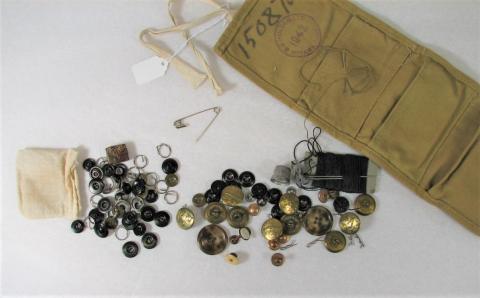
This bone needle is 7,300 years old. It would have taken great skill to fashion the eye on the 1mm thick needle using a stone drill.
If you look closely, you can see that the needle is broken, but a portion of the eye is preserved. This area around the eye looks shiny because of repeated threading, showing how useful this object would have been to the owner.
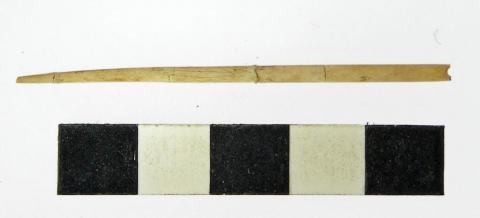
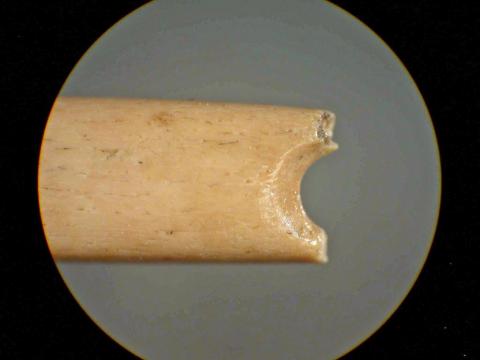
How to: Sew a face mask on an antique sewing machine
Sewing is still considered an essential skill. The machines that have often been passed down are sitting patiently, waiting to stitch again. Dust off that machine, and learn how to make a face mask!
For this project, we used this pattern.
RAM is committed to collecting objects that tell the story of Albertans. The museum is collecting masks so that future generations will be able to learn about what life was like during the COVID-19 pandemic. When you’re done with yours, consider contacting us!